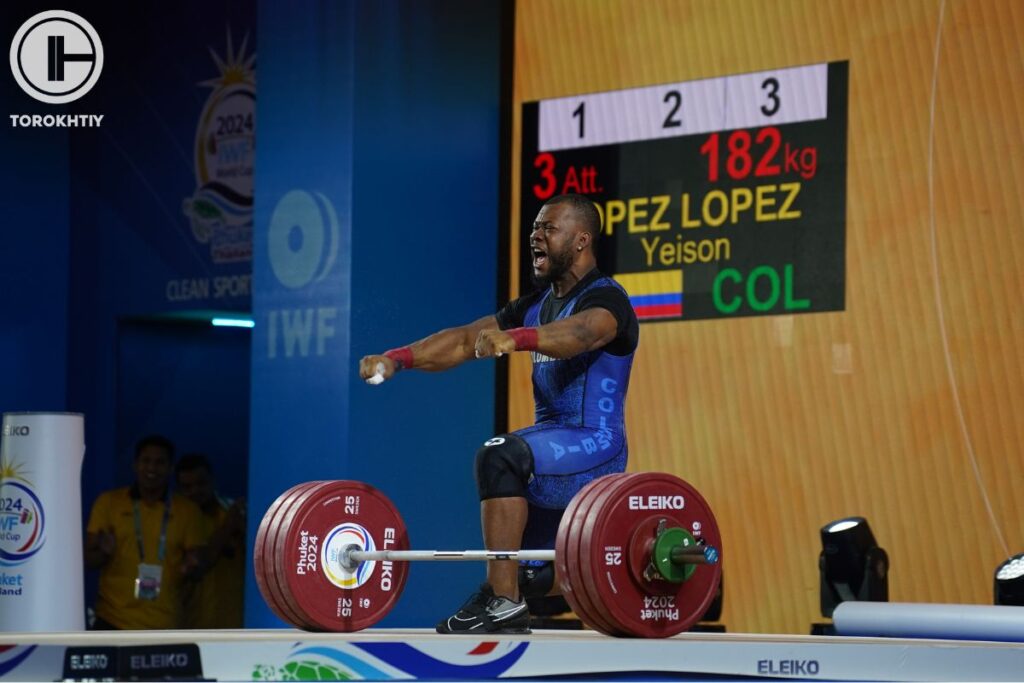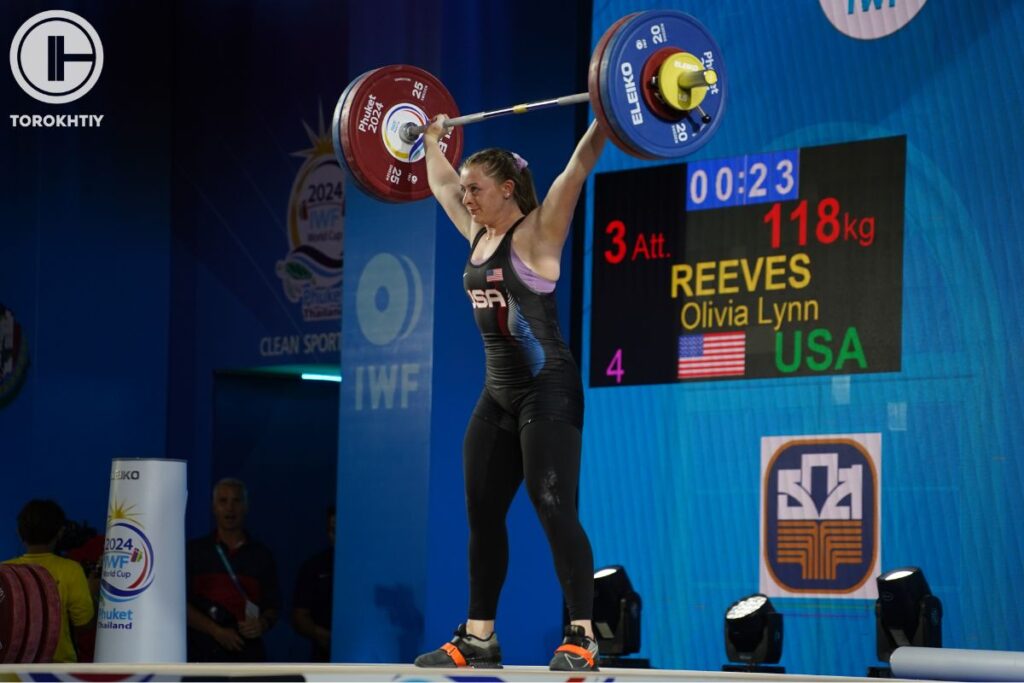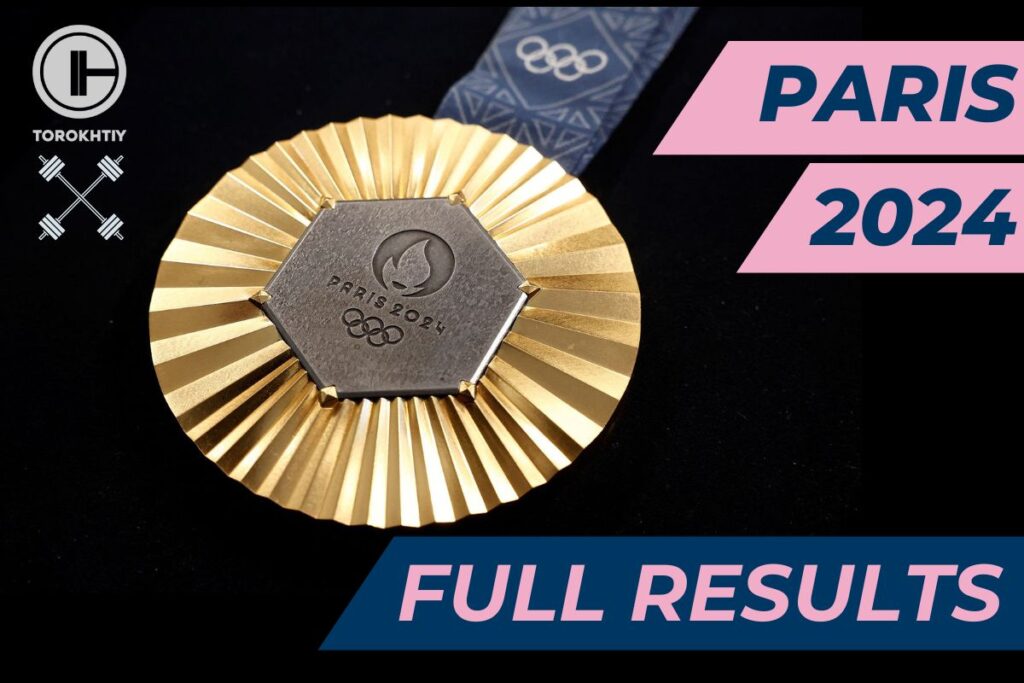Olympic Weightlifting Weight Categories 2024
Author:
The 2024 Olympic Games will take place at the South Paris Arena 6 (Paris Expo), and will be held from 7 to 11 August 2024. Some important changes will occur this year at the Olympic Games, so let’s define what new Olympic weightlifting weight classes we’ll see at Paris 2024.
You’ll learn what changed in this Olympics since Tokyo, namely new weight classes and the competition format in general.

Considering the International Olympic Committee’s goal to maintain gender equality, the number of male and female weightlifting weight classes will be exactly the same for each gender, namely five weight divisions for each.
In December 2020 the International Olympic Committee announced that weightlifting will have the highest reduction in quota of any sport in the 2024 program. To compare: the Tokyo 2020 Games had 14 weight classes, seven for each gender, while there will be 10 Olympic weightlifting categories in 2024 in Paris, five for each gender.
The following categories are new ones that will compete at the Paris Olympics this year: Men’s 61 kg and 73 kg, and Women’s 49 kg and 59 kg. Here’s the table of Olympic weightlifting weight classes 2024 that will be presented in Paris:
Weightlifting Weight Classes in Paris 2024
| MEN’S | WOMEN’S |
|---|---|
| 61 kg | 49 kg |
| 73 kg | 59 kg |
| 89 kg | 71 kg |
| 102 kg | 81 kg |
| 102+ kg | 81+ kg |
Concerning the number of participants, the Paris 2024 Games will see fewer athletes competing at the Paris 2024 Olympic weightlifting weight classes – with 120 weightlifters to participate, compared with 196 athletes in Tokyo and 260 in Rio de Janeiro 2016 and London 2012.
Weight Categories Changes Over the Weightlifting History
Weightlifters compete in the category defined by their body weight. In summer 2018, the International Weightlifting Federation announced the current Olympic lifting weight classes.
The governing body of weightlifting, the International Weightlifting Federation (IWF) was formed in 1905 and arranges the weightlifting world championships for both men and women every year, except for the Olympic year.
The Federation has changed IWF weight classes several times over the past century: restructuring weight divisions, new Snatch, Clean & Jerk and total world records must be set in each category.

In 1920, weight classes were introduced for the Olympic games for the first time. For instance, at the very start, in 1920 and 30s, not every weight category was presented in every Olympic Games and World Championships.
There were the following classes:
- Men’s
52 kg, 56 kg, 60 kg, 67.5 kg, 75 kg, 82.5 kg, 90 kg, 110 kg, 110+ kg.
In 1987, the first Women’s World Championships were held in Florida, with the following categories competing: 44 kg, 48 kg, 52 kg, 56 kg, 60 kg, 67.5 kg, 75 kg, 82.5 kg, 82.5+ kg. While, the Men’s classes remained the same.
In the period of 1993-1997, Men’s and Women’s categories changed a bit, with new weightlifting weight classes competing in the Games:
- Men’s
54 kg, 59 kg, 64 kg, 70 kg, 76 kg, 83 kg, 91 kg, 99 kg, 108 kg, 108+ kg
- Women’s
46 kg, 50 kg, 54 kg, 59 kg, 64 kg, 70 kg, 76 kg, 83 kg, 83+ kg.

Currently, starting from 2000s, there are twenty categories, with ten for male and female classes:
- Men’s
55 kg, 61 kg, 67 kg, 73 kg, 81kg, 89 kg, 96 kg, 102 kg,109 kg, and 109+ kg.
- Women’s
45 kg, 49 kg, 55 kg, 59 kg, 64 kg, 71 kg, 76 kg, 81 kg, 87 kg, 87+ kg
While the sport was available only for men at the Olympics, Women’s Olympic weightlifting weight classes were introduced at the Olympics for the first time at the 2000 Sydney Olympics.
At Tokyo Olympics in 2020, there were seven weight categories for the men – 61 kg, 67 kg, 73 kg, 81 kg, 96 kg, 109 kg and 109+ kg, while women competed in the following Olympic weightlifting weight classes for females – 49 kg, 55 kg, 59 kg, 64 kg, 76 kg, 87 kg and 87+ kg.
All in all, in less than three months we’ll witness history creating, while new prominent lifters leading their weight classes. The world weightlifting community is waiting to set new world records and new weightlifting stars reign the Paris winners’ podium.
Stay tuned with the latest updates about the Olympics in Paris. Follow our news blog and social media channels to know firsthand the freshest details about this long-awaited sports event.
References:
- Torokhtiy Weightlifting News Blog: https://torokhtiy.com/weightlifting-news
- Torokhtiy Media: https://youtube.com/@torokhtiy_media
- Oleksiy Torokhtiy Instagram: https://www.instagram.com/torokhtiy

Read the full report about each day of the Weightlifting at 2024 Olympics prepared by our media team. Don’t miss the opportunity to stay updated and follow this great event in the Olympic weightlifting world with us from the very beginning till the end!
Detailed results of each day:
- 2024 Olympic Games, Day 1 Recap – Women’s 49 kg
- 2024 Olympic Games, Day 1 Recap – Men’s 61 kg
- 2024 Olympic Games, Day 2 Recap – Women’s 59 kg
- 2024 Olympic Games, Day 2 Recap – Men’s 73 kg
- 2024 Olympic Games, Day 3 Recap – Women’s 71 kg
- 2024 Olympic Games, Day 3 Recap – Men’s 89 kg
- 2024 Olympic Games, Day 4 Recap – Men’s 102 kg
- 2024 Olympic Games, Day 4 Recap – Women’s 81 kg
- 2024 Olympic Games, Day 4 Recap – Men’s +102 kg
- 2024 Olympic Games, Day 5 Recap – Women’s +81 kg
🔻Find Your Best Training: Take Our Quiz!
Are you ready to learn and grow? Take our simple quiz to discover the right training program for you. Let us help you succeed — click below to start the quiz!
Author: Tanya Shaiko
News Editor, Olympic Lifting Enthusiast
Best Results: Snatch – 61 kg,
C&J – 78 kg
I’m Tanya, and I just can’t do without fitness. About six years ago, I got into Olympic weightlifting and instantly fell in love with it. Weightlifting is like no other sport – it’s just you versus the bar. Driven by my unwavering passion for an active lifestyle, I’ve been eager to share my personal journey and sports enthusiasm with others. As a journalist and photographer, my interests come full circle, adding an extra dimension to the news column that I curate. This way, I keep my readers updated with the latest happenings in the sports world.








